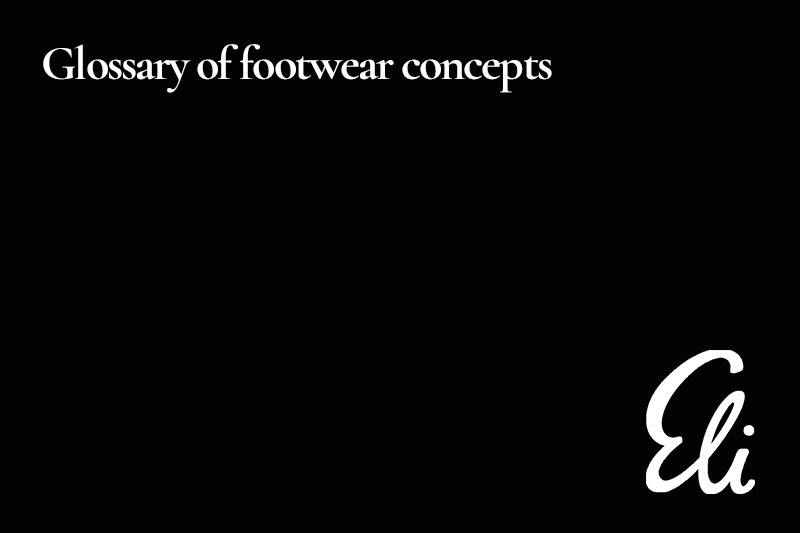
03 Aug Glossary of footwear concepts (5)
Fifth entry corresponding to the series of posts in which we are compiling different terms in a glossary of footwear concepts (5). Within our field, there are numerous terms that refer to important elements in the manufacture and design of shoes.
We continue with other concepts from the world of footwear arranged in alphabetical order (Translator’s note: the order is lost after the translation).
Welted construction
In the mounting of the footwear, the upper has been centered on the last and, attached by gluing or sewing, to the insole of the mounting, in the absence of placing the sole.
Uppers
This is footwear that is already sewn and prepared for mounting on the last. Normally it is called to prepare the uppers of the footwear by sewing, making pairs (right and left foot).

Glossary of footwear concepts
Stitching of the sole channel or groove
The base of the soles usually has a channel, or two if it is in the wall instead of in the base. Once the shoe is assembled, a machine with a bent arm, special for sewing thick materials, sews the rubber sole through all the layers that make up the shoe.
Inverted Seam
Refers to a seam that has been made to join two pieces, then turned inside out so the seam is hidden. The inverted seam is almost always found in the neckline portion of the shoe, or in areas where it meets the inner lining. This type of stitching is also used to hide the edges of the used materials. To make the seam finer, the edges are often trimmed to thin the material before sewing.
pan lang=”EN-US”>Butt
The butt is the most valued, robust, and large part of the cowhide. It has a thickness of approximately 5 to 8 mm, is resistant to water and withstands temperature well. This type of leather is widely used for soles and heels.
Cuban heel
Type of shoe manufacturing in which the sole is glued before and the heel is superimposed on it.
Photo credit: Eli 1957
